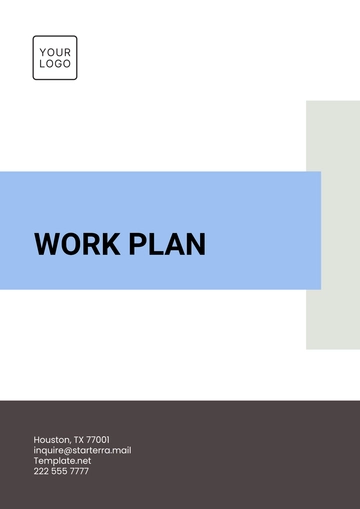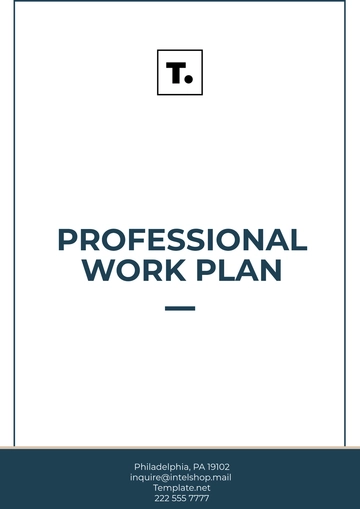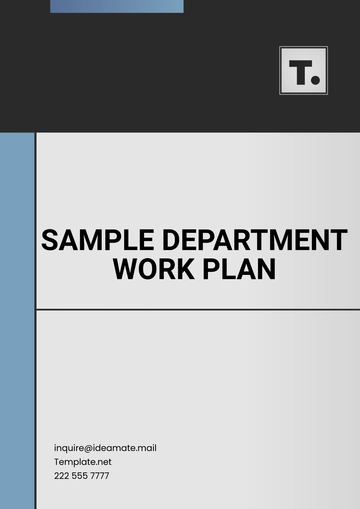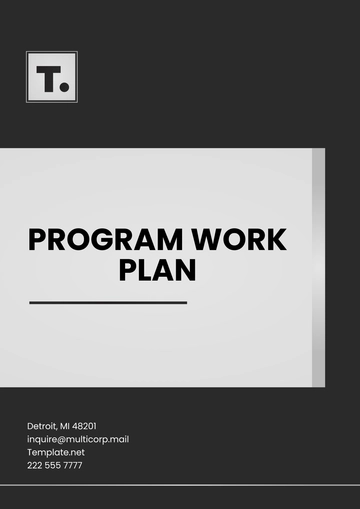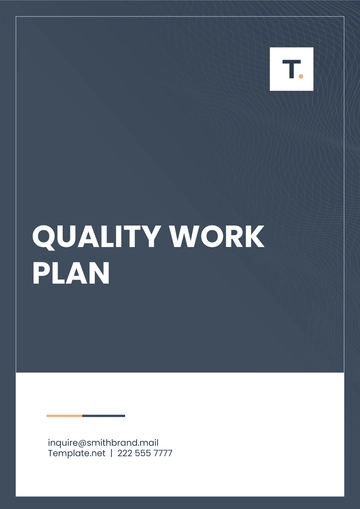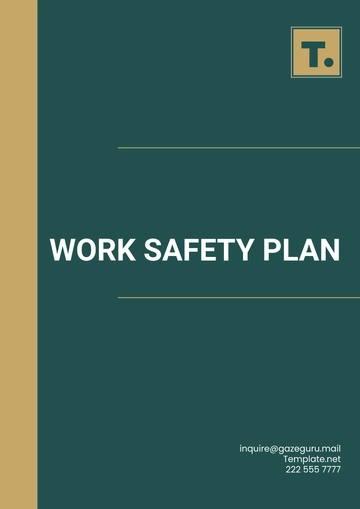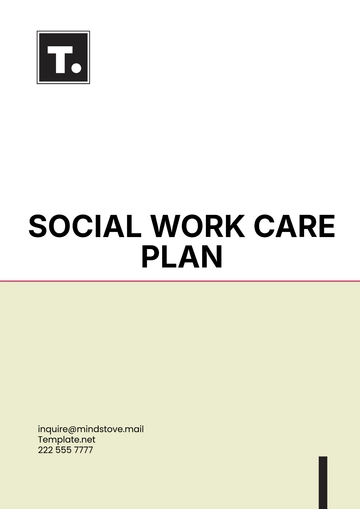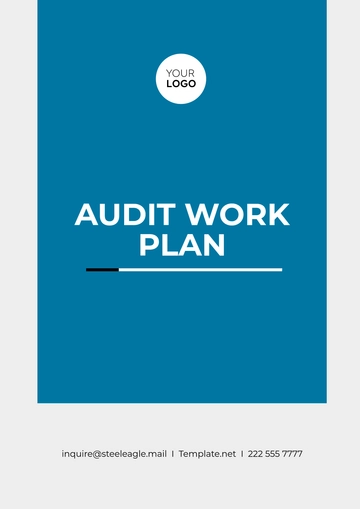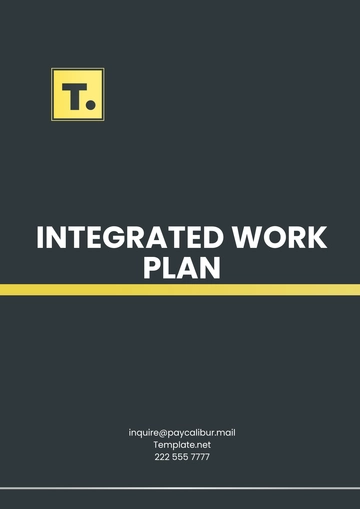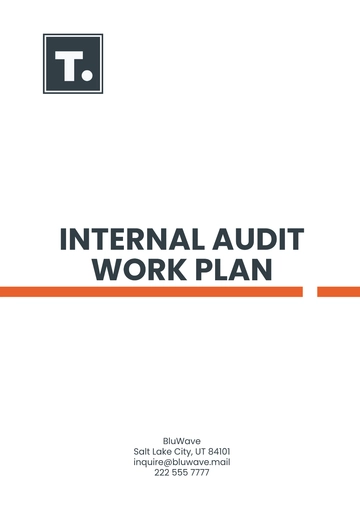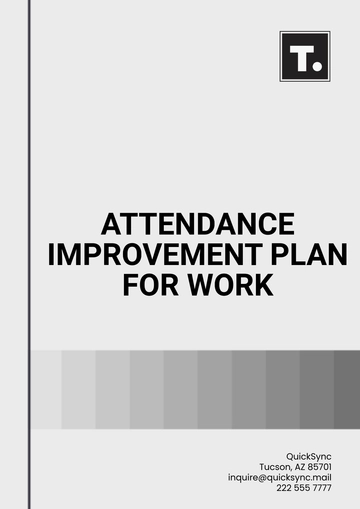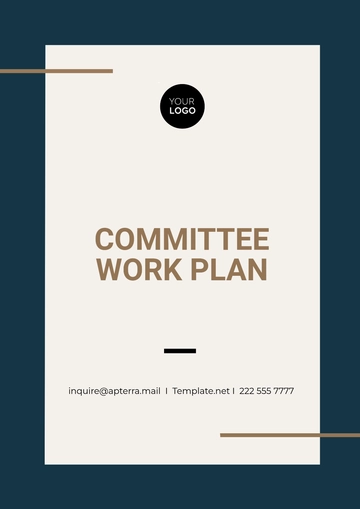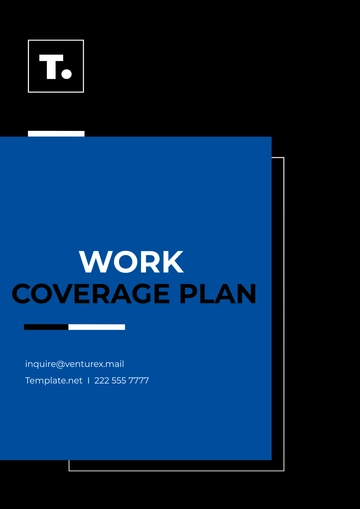Free Work Life Balance Plan

Work-Life Balance Plan
Prepared by: | [YOUR NAME] |
Company: | [YOUR COMPANY NAME] |
Department: | [YOUR DEPARTMENT] |
Date: | [DATE] |
I. Executive Summary
This Work-Life Balance Plan aims for a 20% cut in overtime within six months and seeks a 30% boost in work-life satisfaction within a year by implementing strategies such as flexible hours, remote work options, and wellness programs. By offering flexible hours to 80% of employees soon, the plan improves job satisfaction and reduces stress, promoting a workplace where employees excel and enjoy a fulfilling personal life, thus fostering an engaged and sustainable work culture.
II. Goals and Objectives
Reduce overtime by 20% in 6 months: Optimize work processes, distribute workloads efficiently, and promote time management practices. Use time-tracking and feedback systems for monitoring.
Increase work-life satisfaction by 30% in 1 year: Introduce flexible hours, remote work options, wellness programs, and awareness campaigns. Regular surveys and feedback sessions will guide adjustments.
Implement flexible hours for 80% in the next quarter: Create a clear policy, train managers, ensure IT support for remote work, and track adoption rates closely.
III. Key Activities and Strategies
A. Time Management
Introduce flexible working hours: Define core working hours and allow flexibility around them, accommodating employee preferences where feasible. Communicate expectations clearly to maintain productivity.
Implement a mandatory deadline for work-related emails. Establish a policy specifying non-working hours for email communication to promote work-life balance and reduce after-hours work pressure.
B. Health and Wellness Programs
Start a weekly on-site yoga and meditation class: Collaborate with wellness professionals to conduct regular sessions on-site, promoting physical and mental well-being among employees.
Provide a free gym membership or wellness stipend: Offer financial support or memberships to local gyms, wellness centers, or activities promoting healthy lifestyles.
C. Remote Working Options
Develop a remote work policy: Define eligibility criteria, expectations, communication protocols, and performance metrics for remote work. Include guidelines for ergonomic home office setups and provide subsidies or equipment as needed.
Conduct virtual team bonding activities monthly: Organize online team-building exercises, workshops, or social events to foster connections and maintain team cohesion among remote workers.
IV. Resources Required
Resource | Required For | Estimated Cost |
|---|---|---|
Yoga Instructor | Weekly wellness classes | $1,200 monthly |
IT Support | Remote work setup | $5,000 setup + $500 monthly |
HR Manager | Policy development and monitoring | Salary included in overhead |
Yoga Instructor: Needed to conduct weekly wellness classes, promoting physical and mental well-being among employees. The estimated cost is $1,200 per month for their services.
IT Support: Required for setting up and maintaining remote work infrastructure, including equipment setup, troubleshooting, and ongoing support. Initial setup costs are estimated at $5,000, with an additional $500 per month for ongoing support.
HR Manager: Responsible for developing and monitoring policies related to work-life balance initiatives. Their salary is covered under general overhead costs.
V. Implementation Timeline
Month 1-2:Concentrate on establishing flexible working hours and remote work policies by drafting, reviewing with stakeholders, adjusting, and communicating the final policies to all employees, including clear guidelines and procedures for implementation.
Month 3: Implement the planned yoga and wellness programs by coordinating with professionals to schedule weekly classes, promoting employee participation, and communicating the benefits to boost engagement.
Month 4-6: Assess the effects of new flexible hours, remote work, and wellness strategies via surveys and focus groups. Analyze satisfaction, productivity, and balance data. Adjust policies and programs based on feedback to enhance results and meet organizational objectives.
VI. Monitoring and Evaluation
We will collect employee feedback through surveys and focus groups to evaluate the effectiveness of our strategies, focusing on work-life balance, productivity, and flexibility, and gain qualitative insights for further improvements.
Key metrics to monitor include:
Employee Satisfaction Scores: Assess changes in satisfaction levels related to work-life balance, flexibility, and wellness initiatives.
Productivity Metrics: Measure productivity trends during regular working hours and overtime to evaluate the impact of reduced overtime goals.
Engagement and Participation Rates: Track participation rates in wellness programs, utilization of flexible hours, and adherence to remote work policies.
Feedback Analysis: Analyze survey responses and focus group insights to identify common themes, concerns, and areas for improvement.
- 100% Customizable, free editor
- Access 1 Million+ Templates, photo’s & graphics
- Download or share as a template
- Click and replace photos, graphics, text, backgrounds
- Resize, crop, AI write & more
- Access advanced editor
Find equilibrium with our Work-Life Balance Plan Template from Template.net. This editable and customizable resource aids in achieving an optimal work-life balance. Effortlessly tailor schedules and priorities with our intuitive Ai Editor Tool. Create personalized plans that promote well-being and productivity, fostering a harmonious lifestyle. Strike the perfect balance between professional responsibilities
You may also like
- Finance Plan
- Construction Plan
- Sales Plan
- Development Plan
- Career Plan
- Budget Plan
- HR Plan
- Education Plan
- Transition Plan
- Work Plan
- Training Plan
- Communication Plan
- Operation Plan
- Health And Safety Plan
- Strategy Plan
- Professional Development Plan
- Advertising Plan
- Risk Management Plan
- Restaurant Plan
- School Plan
- Nursing Home Patient Care Plan
- Nursing Care Plan
- Plan Event
- Startup Plan
- Social Media Plan
- Staffing Plan
- Annual Plan
- Content Plan
- Payment Plan
- Implementation Plan
- Hotel Plan
- Workout Plan
- Accounting Plan
- Campaign Plan
- Essay Plan
- 30 60 90 Day Plan
- Research Plan
- Recruitment Plan
- 90 Day Plan
- Quarterly Plan
- Emergency Plan
- 5 Year Plan
- Gym Plan
- Personal Plan
- IT and Software Plan
- Treatment Plan
- Real Estate Plan
- Law Firm Plan
- Healthcare Plan
- Improvement Plan
- Media Plan
- 5 Year Business Plan
- Learning Plan
- Marketing Campaign Plan
- Travel Agency Plan
- Cleaning Services Plan
- Interior Design Plan
- Performance Plan
- PR Plan
- Birth Plan
- Life Plan
- SEO Plan
- Disaster Recovery Plan
- Continuity Plan
- Launch Plan
- Legal Plan
- Behavior Plan
- Performance Improvement Plan
- Salon Plan
- Security Plan
- Security Management Plan
- Employee Development Plan
- Quality Plan
- Service Improvement Plan
- Growth Plan
- Incident Response Plan
- Basketball Plan
- Emergency Action Plan
- Product Launch Plan
- Spa Plan
- Employee Training Plan
- Data Analysis Plan
- Employee Action Plan
- Territory Plan
- Audit Plan
- Classroom Plan
- Activity Plan
- Parenting Plan
- Care Plan
- Project Execution Plan
- Exercise Plan
- Internship Plan
- Software Development Plan
- Continuous Improvement Plan
- Leave Plan
- 90 Day Sales Plan
- Advertising Agency Plan
- Employee Transition Plan
- Smart Action Plan
- Workplace Safety Plan
- Behavior Change Plan
- Contingency Plan
- Continuity of Operations Plan
- Health Plan
- Quality Control Plan
- Self Plan
- Sports Development Plan
- Change Management Plan
- Ecommerce Plan
- Personal Financial Plan
- Process Improvement Plan
- 30-60-90 Day Sales Plan
- Crisis Management Plan
- Engagement Plan
- Execution Plan
- Pandemic Plan
- Quality Assurance Plan
- Service Continuity Plan
- Agile Project Plan
- Fundraising Plan
- Job Transition Plan
- Asset Maintenance Plan
- Maintenance Plan
- Software Test Plan
- Staff Training and Development Plan
- 3 Year Plan
- Brand Activation Plan
- Release Plan
- Resource Plan
- Risk Mitigation Plan
- Teacher Plan
- 30 60 90 Day Plan for New Manager
- Food Safety Plan
- Food Truck Plan
- Hiring Plan
- Quality Management Plan
- Wellness Plan
- Behavior Intervention Plan
- Bonus Plan
- Investment Plan
- Maternity Leave Plan
- Pandemic Response Plan
- Succession Planning
- Coaching Plan
- Configuration Management Plan
- Remote Work Plan
- Self Care Plan
- Teaching Plan
- 100-Day Plan
- HACCP Plan
- Student Plan
- Sustainability Plan
- 30 60 90 Day Plan for Interview
- Access Plan
- Site Specific Safety Plan
